The 5 Superhero Movies Most Inspired by Their Original Comic Storylines (and 5 Who Missed the Mark)
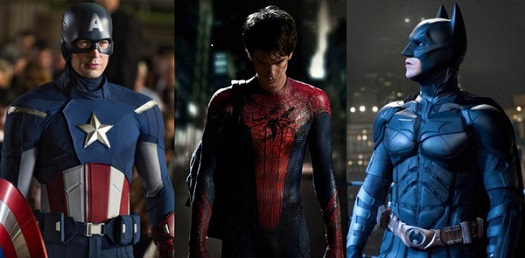 |
Finding the movie in a novel isn’t always easy, and finding the movie in the decades-long ongoing soap operas that are superhero comics? That is maybe a million times harder. At least a novel is usually written by a single author with a single vision, and therefore easier to translate to film, but comics change hands constantly, and one creator’s version of Batman, for example, is vastly different from another’s. Frankly, given these facts, it’s a miracle any superhero movie turns out to be any good at all.
Some of the most successful adaptations of superheroes often just take the basic characters and origin stories of the heroes and then do their own spin on them, Hollywood style. The Avengers is a great superhero movie, maybe even the greatest, but as an actual adaptation of fifty years of Avengers comics? it seems that Joss Whedon and Marvel Studios didn’t even bother to try. The Iron Man movies, by and large, play pretty fast and loose with the comics they were based on too. So this isn’t about which superhero movies are the best, but which superhero movies made the best and worst use of the decades-long stories on which they are supposedly based.
I should stress that this is NOT a best/worst superhero movies list, hence the lack of movies like Catwoman or Steel, which don’t even attempt to adapt the comics, just use the names. That’s a whole other list.
The Worst Uses of Comics Book Storylines In Superhero Movies
5. Batman (1989)
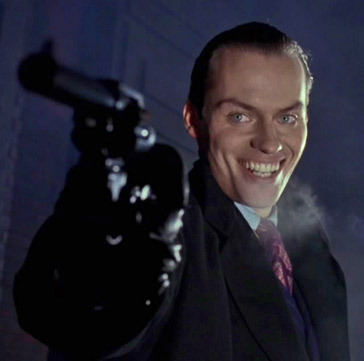 |
There were a lot of weird choices made for Tim Burton’s original Batman film, to say the least. Even though it was greenlit in part of the resurgence in Batman’s popularity in the comics and popular culture due to Frank Miller’s The Dark Knight Returns and Batman: Year One, almost all the cues that Burton took from the comics were from the actual Batman “year one”… as in 1939. From the art deco look to Batman using guns, everything about Batman ’89 screams inspiration from that first year of Batman’s comic book adventures. Even love interest Vicki Vale (a character introduced in the late forties) more or less resembled the string of pretty, disposable “fiancees” Bruce went through like tissue paper in the late thirties and early forties.
The one thing very much not like 1939 Batman comics is the idea that the nameless killer of Bruce Wayne’s parents, the one that drives him to vigilantism, is really the future Joker as a young thug. I’m not sure who made that choice, if it was Batman screenwriter Sam Hamm or Burton himself, but having the Batman’s #1 foe being the reason he was even created takes away the randomness and senselessness of the crime that made him in the first place. Although in some comics the murderer of the Waynes often remains nameless, and sometimes it’s a random hoodlum named Joe Chill, it’s always someone who’s more or less a nobody. By making it the future Joker, it’s all a bit too neat and pat, and I’m glad that Batman Begins restored the classic origin once more for the masses.
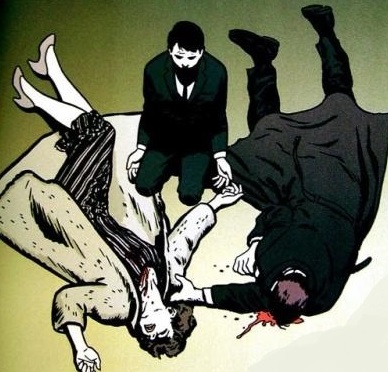 |
4. Spider-Man 3
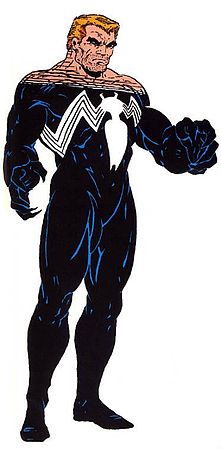 |
While I don’t hate Spider-Man 3 as much as most of my fellow nerds, there’s no denying it is a hot mess of a movie. While some things are done right (I still love Thomas Haden Church as Sandman) and James Franco has some inspired moments as Baby Goblin, the ball was super-dropped when it came to Spidey’s fanboy favorite baddie Venom.
Director Sam Raimi, a Spidey fan from the original Stan Lee run of the sixties, wasn’t a Venom fan, as that characters was introduced in the eighties, and was especially popular in the nineties. Rumor has it that Raimi was basically forced by the studio to add Venom and the whole alien symbiote aspect to the movie, due to his massive popularity with modern comics fanboys. But Topher Grace’s version of Eddie Brock bears no physical or character resemblance to the Eddie Brock of the comics, and all his version of Venom did was take up space in an already crowded movie, ultimately pleasing no one, Venom fans and Venom haters alike. I imagine that eventually, the Andrew Garfield Spider-Man movies will re-do Venom in a way that hopefully does the character some justice.
3. Iron Man 3
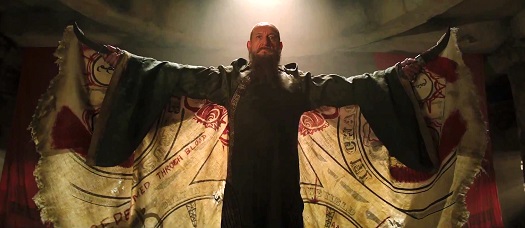 |
Being super faithful to a comic book hero’s storyline doesn’t always make for a good movie (see #5 on our best list) and sometimes, trashing a sacred storyline from the comics can still result in a decent flick regardless. That’s what happened, at least in my opinion, with Iron Man 3,which more or less said “screw it” to all the storylines involving Iron Man’s #1 baddie the Mandarin, and totally did their own thing with it. For the two of you reading this who still haven’t seen Iron Man 3 yet, SPOILERS-but the Mandarin in the movie (as played by Sir Ben Kingsley) wasn’t really the Mandarin at all, but a decoy played by a British actor named Trevor Slattery. As far as we the viewers know…there is no real Mandarin.
While I personally think this reveal worked, and was a genuine surprise in an era were we know almost every part of a movie long before we set foot in a theater, some fanboys were not pleased, to say the least. While it can be debated ad nauseum whether or not the twist in Iron Man 3 worked or not, the fact remains – Marvel Studios took a massive part of Iron Man’s comic book storyline, and pretty much wiped their butts with it.
2. “Gifted” From Joss Whedon’s Astonishing X-Men in X-Men: The Last Stand
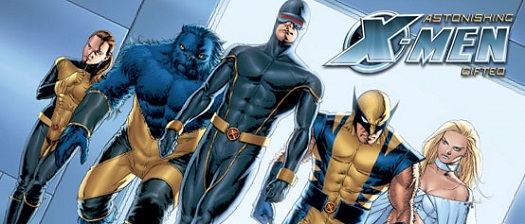 |
After surviving a rather dire decade, at least story wise (sorry, all you ’90s kids, but the X-Men comics of that era were pretty dang bad) the X-Men had their second creative renaissance under writer Grant Morrison in the early 2000’s, and eventually, “King of the Geeks” Joss Whedon. Whedon’s first story arc in Astonishing X-Men, titled “Gifted,” introduced the idea of a synthetic cure for mutancy, and that aspect of his story wound up being the secondary plot of X-Men: The Last Stand.
Sadly, it was all handled terribly in the movie, with the ramifications of a cure to the mutant gene barely dealt with beyond perfunctory speeches from Halle Berry as Storm, and the notion of the mutant cure being used as a weapon by the government. When director Brett Ratner decided he would give Rogue the cure just so she could sleep with her boyfriend Iceman, that more than anything showed how much Ratner (and Fox, who made these movies) didn’t understand the central metaphor of the comic books these stories were based on. But X-Men: The Last Stand didn’t just do disservice to one beloved comics storyline, it somehow managed to mangle two of them, as seen by our #1 entry in the “worst” list.
1. The Dark Phoenix Saga Adapted in X-Men: The Last Stand
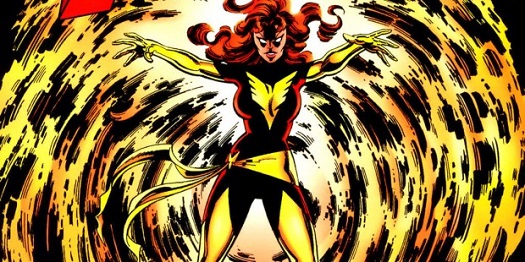 |
In the comics, the series of stories now collectively called “The Dark Phoenix Saga” is still considered the X-Men’s magnum opus, the story that cemented them as the premier Marvel comic during the late seventies and early eighties run by writer Chris Claremont and artist John Byrne. The duo had taken founding member Jean Grey, then known as “Marvel Girl,” and upgraded her power to cosmic levels as the Phoenix. Over the course of five years, they slowly turned up Jean’s power levels, and turned down her ability to control those powers, as Jean started to lose her mind under the burden of godhood. When she finally went dark, the resulting chaos on those who loved her made for the most gripping X-Men story up to that point.
The problem with adapting the Dark Phoenix Saga in X-Men The Last Stand was two-fold. First off, they combined that story with yet another famous X-Men story, never giving the Dark Phoenix saga its proper due. In the comics, Jean Grey struggled with her control of the incredible power within her, before fully giving into her darker impulses. It was a slow build, and while The Last Stand couldn’t have taken the same amount of time as the comics did, they completely skipped the struggle Jean was having and instantly went from Jean being dead in the last movie to Jean waking up and being a rampaging id monster in this movie. Golden opportunities were missed in having Jean struggle with her dark side, and instead we get Stephen King’s Carrie White at the prom on steroids.
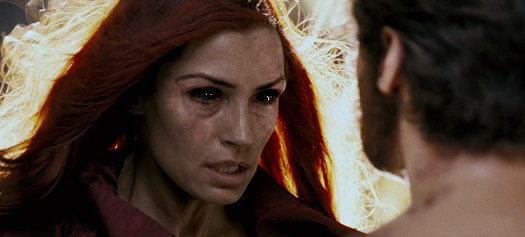 |
HONORABLE MENTION: Fantastic Four: Rise of the Silver Surfer
Because “Galactus Cloud.” As Stan Lee would say, ’nuff said.
The Best Uses of Comics Book Storylines In Superhero Movies
5. Green Lantern
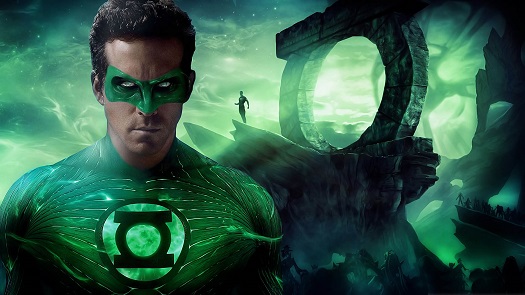 |
So Warner Brother’s 2011 Green Lantern movie, directed by Martin Campbell, isn’t exactly what one would call a “good movie” by any stretch of the imagination. For costing a reported $200 million dollars, it looks very cheap, and it is hard to see just where all that money went, because the movie only spends about 15 minutes total in space, where all the bulk of the special effectsy stuff takes place. Maybe it all went to Ryan Reynolds’ personal trainer and body waxer.
Having said that, though, whatever its flaws may be, Green Lantern pulled from tons of recent comic book lore, specifically writer Geoff John’s run on the title over the past decade. Hal Jordan’s tragic past with his test pilot dad, his training by alien Lantern Kilowog (all three minutes of it anyway. Really, it’s three minutes of screentime. I’ve checked.) and the notions of willpower and fear giving the rings their energies are all ideas lifted straight from recent comic book stories. While one can fault Green Lantern for many things (and should), fidelity to the comics isn’t one of them.
4. X2: X-Men United
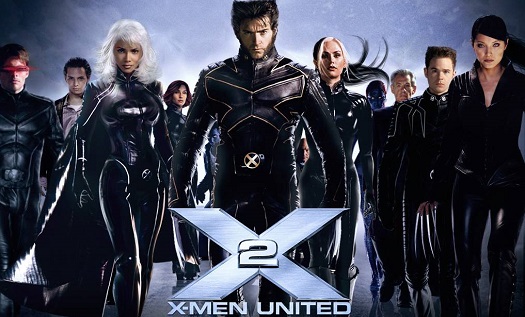 |
A lot of the things that Christopher Nolan’s Dark Knight trilogy gets praised for doing, like being the first films to take comic book heroes and put them in a darker, more realistic world, were in fact done by Bryan Singer first in his X-Men films, specifically X2: X-Men United. For people who say Singer’s X-Men movies don’t draw from the source material, I say they’re only looking at surface stuff (in other words, the costumes) and pretty much ignoring everything else.X2 specifically drew from some of the very best of the X-Men comics, while still maintaining its own unique storyline particular to the movie universe.
Singer and company took elements from storylines like the Phoenix Saga (not the Dark Phoenix Saga, mind you, but the original manifestation of Jean’s Phoenix abilities from Uncanny X-Men #101 and onwards), the second arc of Mark Millar’s Ultimate X-Men, Barry Windsor Smith’s original “Weapon X” series from Marvel Comics Presents that gave us Wolverine’s backstory, with then the bulk of the film’s plot taken from Chris Claremont’s seminal X-Men original graphic novel God Loves, Man Kills. Yet all of these disparate story elements drawn from years of comics smoothly coalesced into one film, a film that still had to serve as a sequel to the previous movie’s themes and story, and not being allowed to forget those either.
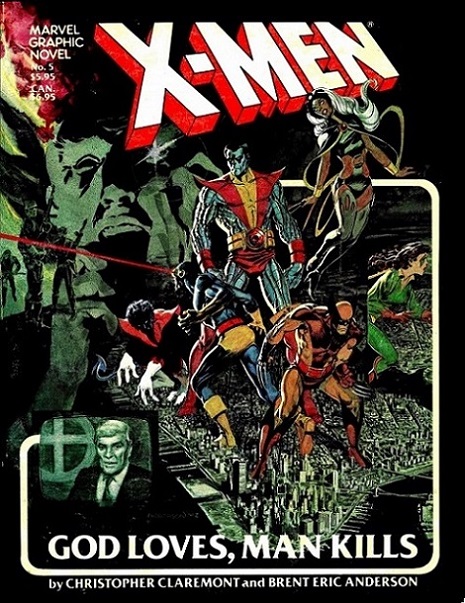 |
3. Sam Raimi’s Spider-Man
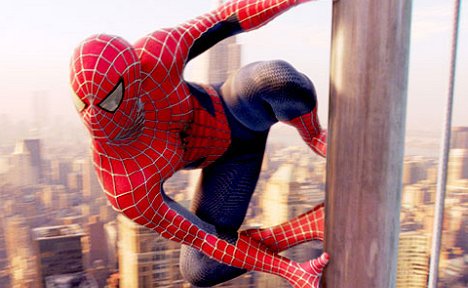 |
If Bryan Singer’s X-Men got the modern comic book movie ball rolling, it was Raimi’s Spider-Man in 2002 that really blew the barn doors open. But more than just a fun superhero flick, Spider-Man plays like the Cliff’s Notes version of Stan Lee, Steve Ditko and John Romita’s first decade or so of Spidey stories, condensed successfully into a two-hour narrative. We go from Peter Parker’s accident with the radioactive spider and his high school bullying at the hands of Flash Thompson, to college days with his roomie Harry Osborn and the love triangle with Mary Jane Watson, to the discovery by his arch nemesis the Green Goblin of his true identity. All of this stuff played out over a decade’s worth of comics, and yet Raimi made it all unfold over two hours fairly seamlessly and without feeling like it was rushed.
Sure, there is some stuff very much not like the comics – organic web-shooters, for one, and combining Mary Jane with Gwen Stacy – but for the most part Raimi’s movie is a love letter to the stories that made Spider-Man a household name back in the sixties.
2. Captain America: The First Avenger
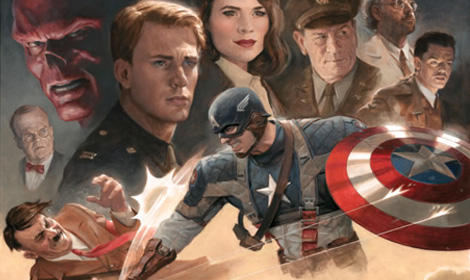 |
Most of the Marvel Studios films, while in no way unrecognizable from their comic book counterparts, also play kind of fast and loose with the comic book stories they are based on. The Iron Man movies, for example, take Tony Stark’s basic origin and character, and then more or less gloss over most of his well known comic book stories. The first Thor just deleted his Donald Blake alter-ego all together. See the list above for Iron Man 3.
But at Marvel Studios, the great exception has truly been Captain America. Cap’s origin story plays almost exactly as Jack Kirby drew it back in 1940, and no one thought to update the Red Skull into something more current – he’s his old evil, Nazi, metaphorical mustache-twirling self, straight from the pages of those old comics. And there were several other moments lifted straight from the comics, from Cap punching Hitler square in the jaw to the use of the Cosmic Cube, to HYDRA…Captain America: The First Avenger pulled from the very best of the comics. Heck, they even found a role for Arnim Zola. And from the looks of the trailer, Captain America: The Winter Soldier looks to be inspired even more from the comics than the first movie was.
1. Christopher Nolan’s Dark Knight Saga – Batman Begins, The Dark Knight, The Dark Knight Rises
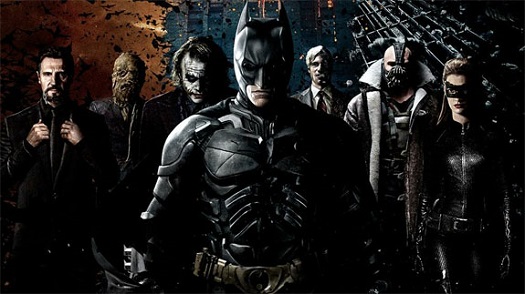 |
Christopher Nolan may not be a superhero comics fan in general, but there is no doubt he’s a Batman comic book fan, based on the huge amount of story elements taken from the actual comics in his Dark Knight trilogy. The Dark Knight trilogy is, in fact, like a giant homage to the past forty years of Batman comic books spread across a seven hour narrative. Batman Begins is highly influenced by Frank Miller’s Batman: Year One, and the opening scenes, with a young Bruce Wayne falling into a cave of bats while still a child, is directly lifted from flashback scenes in Miller’s The Dark Knight Returns. Bruce’s training with Ra’s al Ghul is certainly influenced by the globetrotting Batman stories of Denny O’Neil and Neal Adams from the seventies.
But it was the second film,The Dark Knight, which had the largest amount of story references lifted from the comics pages. Which is why, in many ways it is the ultimate Batman movie. Bruce Wayne ditching Wayne Manor for a swanky penthouse is yet another homage to the Seventies version of Bruce Wayne. The Joker’s attempt to take a good man and drive him insane by giving him “one bad day,” as he does to Harvey Dent in The Dark Knight, is something he attempts to do to James Gordon in Alan Moore’s seminal Joker story The Killing Joke.
Then there’s Jeph Loeb and Tim Sale’s 1997 mini-series, The Long Halloween. The “A” Plot in this graphic novel is about the serial killer Holiday, who kills someone once a month, on that month’s most prominent Holiday. But the “B” Plot is about how the the freaks take over from the Mafia in Gotham, a theme thut runs heavy in The Dark Knight. The other major element in The Long Halloween is how the trinity of Lt. Gordon, Batman and Harvey Dent form to try to save Gotham, and the eventual transformation of Dent into Two Face. I’d say this one might have been a more prominent influence on The Dark Knight than even the Killing Joke was.
But it doesn’t end there, kids: The Dark Knight Rises then contains even more references to famous Batman comic book storylines, like the use of Bane from Knightfall, the No Man’s Land story arc, and several more. How much of these references can be attributed to screenwriter David S. Goyer, and how many can be attributed to Nolan, is anyone’s guess. But one thing is very clear: the Dark Knight trilogy owes a far heavier debt to the comic book stories than the Burton/Schumacher films could on their very best day.
HONORABLE MENTION: The Wolverine
This past summer’s Wolverine movie was a pretty dang faithful adaptation of Chris Claremont and Frank Miller’s original Wolverine mini-series from 1982, with several sequences taken straight out of the comic. It may be Fox Studios’ most faithful X-Men related movie yet.
Previously by Eric Diaz:
10 Reasons Why American Horror Story: Coven Is The Gayest Horror/Fantasy Show Ever
The Ten Worst DC “New 52” Costume Redesigns
The Top Ten Substance Abusers in Comics
Nine Reasons a Flash TV Show Could Be Better Than a Flash Movie
The Ten Heroes Most Unworthy Of Justice League Status (Who Joined Anyway)
